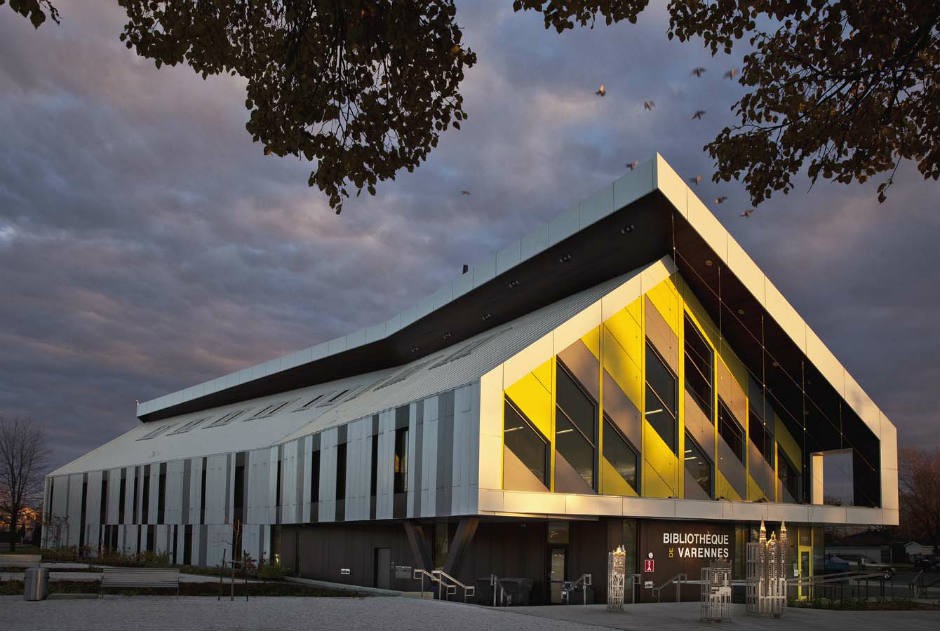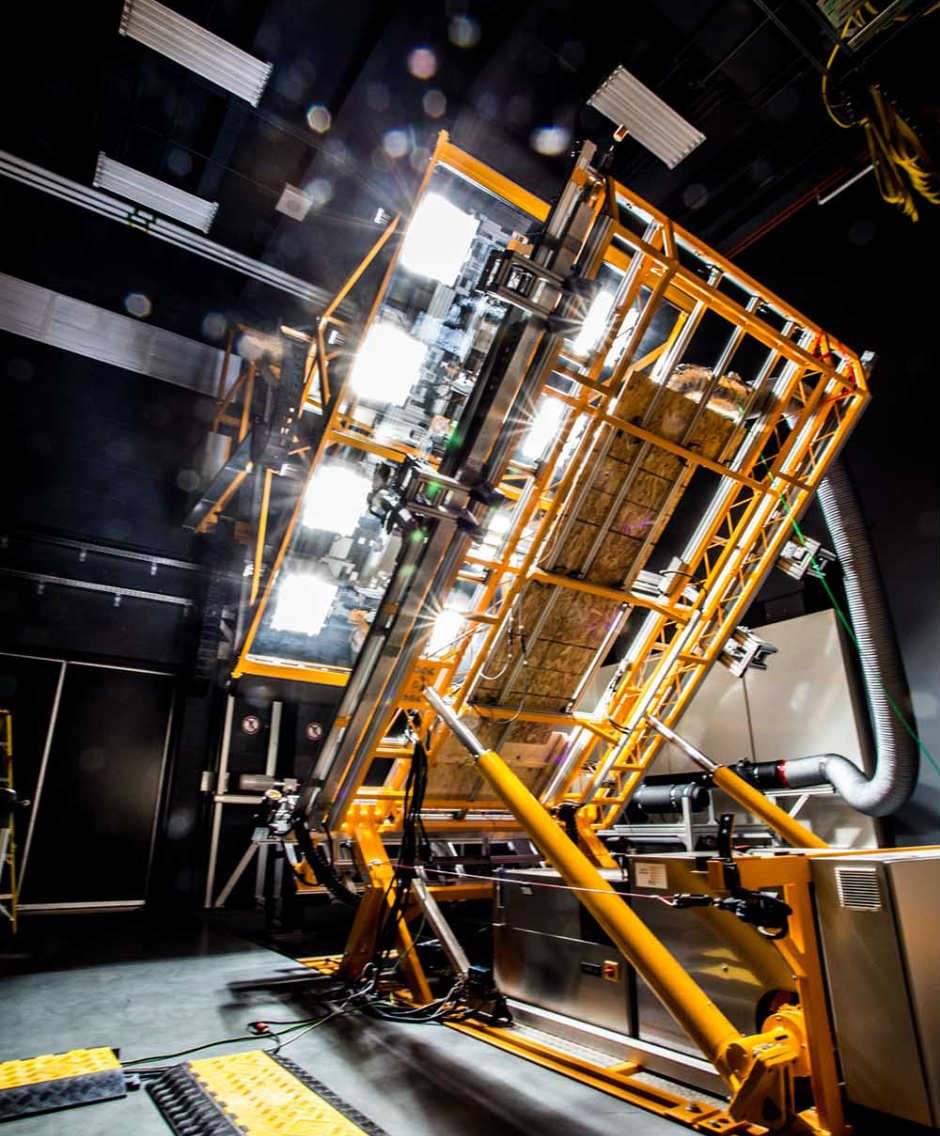How Varennes Library achieves net-zero energy, and its lessons for future city building
In addition to providing a knowledge centre for the community, the Concordia-led initiative produces at least as much energy as it uses over the course of a year.
When it comes to reducing greenhouse gas emissions, Canada has a long way to go.
In December, Environment and Climate Change Canada projected that unless additional measures are taken, Canada is faltering in its goal of reducing greenhouse gas emissions by 80 per cent until 2050.
As Canadians deal with ever-increasing extreme weather events and the looming threat of global warming, the question becomes: How can Canada get closer to its environmental goals?
Net-zero energy buildings can be an integral part of the solution, says Andreas Athienitis, professor of building engineering at Concordia. Athienitis is the director of the Concordia Centre for Zero Energy Building Studies, where they are working on developing buildings that are smarter, more resilient and much more energy-efficient.
A net-zero energy building (NZEB) is one that produces as much energy as it consumes over the course of a year from renewable energy sources. These buildings are designed with a number of features that help them conserve energy, including geothermal heat pumps that transfer heat to and from the ground, windows with specialized coatings to reduce heat loss, photovoltaic solar collection systems and ‘smart’ proactive controls.
 The Varennes Library, the first institutional net-zero energy building in Canada.
The Varennes Library, the first institutional net-zero energy building in Canada.COURTESY OF VARENNES LIBRARY
One cutting-edge example is the Varennes Library, located in Varennes, Quebec and the first institutional NZEB in Canada. Athienitis was one of the experts guiding the design and technology integration of the two-storey, 24,000-square-foot library, which has a 110 kW photovoltaic array on its sloped roof for solar energy collection. “That building has special aspects,” says Athienitis. “It’s designed to optimize the solar collection surfaces with south-facing windows and a south-facing roof.”
The building uses photovoltaic/thermal technology to extract heat in addition to electricity from the solar panels to heat ventilation fresh air inside during the winter months. It also has ground-source geothermal heat pumps drawing from 150-metre-deep geothermal boreholes. Motorized windows allow for natural ventilation and expansive windows provide lots of natural light.
In addition to being a marvel of energy-efficient design, the building is on track to achieve its net-zero energy target by 2021.
The energy concept of the Varennes library was partly conceived under the federally-funded and Concordia-housed Solar Buildings Research Network (SBRN), an initiative of the Natural Sciences and Engineering Research Council of Canada (NSERC). The building was constructed under a subsequent program, NSERC’s Smart Net-Zero Energy Buildings Strategic Research Network (SNEBRN), a network also led by Athienitis and composed of 29 researchers from 15 Canadian universities, plus partners from government and industry.
Now that the building is operational, research has shifted from the design stage to the operational stage, says Athienitis. He and a team from Concordia is studying the performance of the building to find solutions that will have broader applications for other commercial and institutional buildings.
In addition to helping Canada achieve its greenhouse gas emission goals, Athienitis points out that NZEBs are more resilient because they have on-site power generation. That can come in handy during weather-induced power outages.
“And they can provide power to the grid when the grid needs it,” he says.
Buildings like the Varennes Library are essential to the proliferation of NZEBs, says Liam O’Brien, an associate professor and program advisor for Carleton University’s Architectural Conservation and Sustainability Engineering program, who also worked with Athienitis on the Varennes Library project through both the NSERC networks while he was pursuing his doctoral degree at Concordia.
“These buildings can demonstrate that solar technologies are viable,” he says. “Researchers can actually monitor the system ‘in situ,’ which is key. It’s one thing to do something in a lab, it's another to see it work in reality when it's been installed by tradespeople and you encounter real weather conditions and real operating constraints.”
 The Solar Simulator in the Environmental Chamber Lab at Concordia, where Dr. Athienitis and his team does most of their research on NZEBs.
The Solar Simulator in the Environmental Chamber Lab at Concordia, where Dr. Athienitis and his team does most of their research on NZEBs.
O’Brien notes that traditionally, heating and cooling in commercial and institutional buildings has largely been scheduled, without much knowledge of when people actually need it.
“The heat may start at 6am and end at midnight because we don't exactly know when people are going to be there,” he says.
O’Brien works on artificial intelligence-powered systems that are able to learn real occupancy schedules and adjust temperature levels accordingly. “If in one office it seems someone's not arriving until 10am or 11am, we don't need to heat their office starting at 6,” he explains.
Like Athienitis, O’Brien is approaching NZEBs as an integral part of the community, rather than just one energy-efficient building.
“It doesn’t make sense to isolate buildings because if there's over-generation of energy, then that energy is wasted,” he says. “When one building has excess energy production, another may need it.”
Athienitis points out that net-zero energy buildings all have the potential to be net-positive – meaning they produce more energy than they consume. He notes that in the Varennes library, they didn’t use the whole roof to produce solar heat. If they had, it could have had the capacity to heat several adjacent buildings too.
He and his team are working with universities, governments and industry partners to develop a roadmap for completing these kinds of projects on a large scale, in different provinces with different climates. To that end, Athienitis says they are working on developing a third NSERC network to continue the research and provide input to national policies.
Though he built his own net-zero energy home ten years ago, Athienitis says that for him, it’s not enough. His goal is to see more NZEBs built across the country, and the world.
“I hope to do better,” he says.
Discover how Concordia is reimagining and reinventing communities and cities.